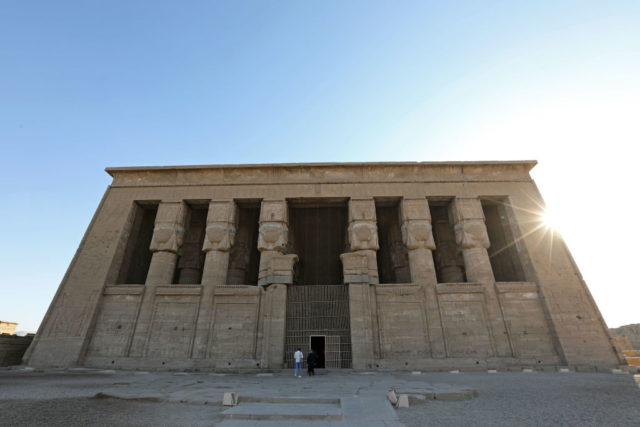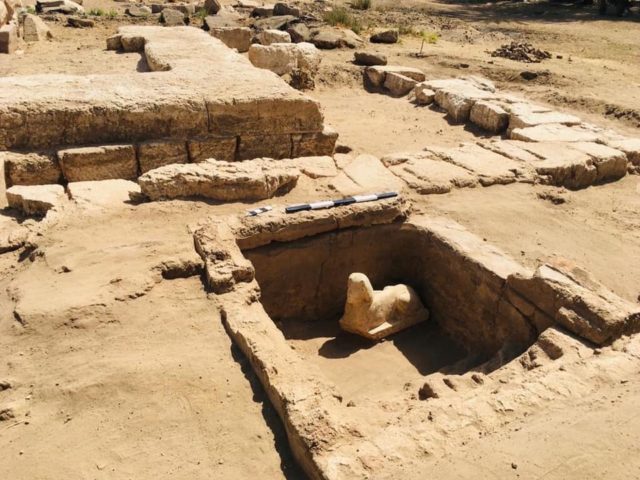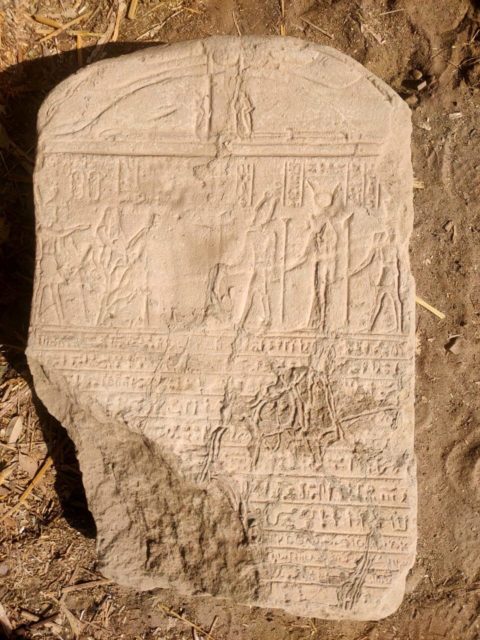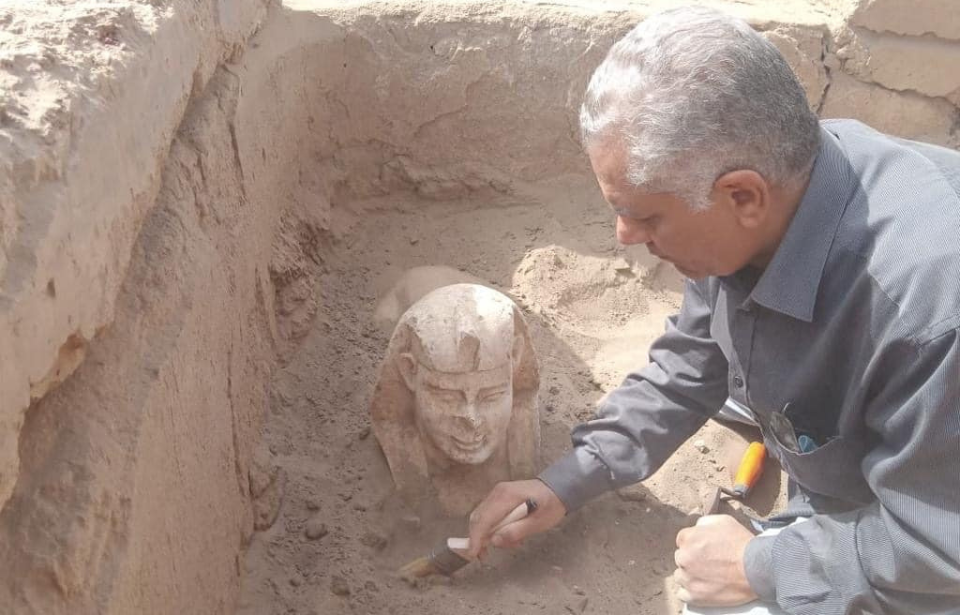The Great Sphinx of Giza is among the most iconic figures of ancient Egypt, sitting imposingly along the west bank of the Nile. Now, archaeologists have found another, albeit much smaller, statue within the Dendera Temple Complex.
Perhaps the most interesting thing about this discovery is the statue’s smiling features, which were likely etched in the likeness of an ancient Roman emperor.
Dendera Temple Complex

The sphinx statue was found at the Dendera Temple Complex, located 280 miles south of Cairo, Egypt. The site spans some 40,000 square meters, and consists of numerous different temples. Hathor, built around 54 BCE, is the main structure, although other elements were added much later during the rule of the ancient Romans.
The most famous part of the Hathor temple is undoubtedly the Dendera zodiac, a bas-relief located on the ceiling of the chapel dedicated to Osiris. It depicts Taurus, Libra and the night sky, and has been called, “the only complete map that we have of an ancient sky.”
The version in the temple is a fake, as the original was taken by the French during the 1800s. It has since been preserved, and is currently housed in the Louvre Museum.
A Roman-era sphinx?

It was near the Dendera Templex Complex that another incredible discovery was made. Archaeologists tasked with excavating a two-level tomb, which they describe as a limestone shrine, with a mud-brick base dating back to the Byzantine era, unearthed a sphinx statue.
The figure is said to have “a smiley face and two dimples,” which immediately left the team wondering who it was intended to be. They have since concluded it very well could have been Emperor Claudius.
Emperor Claudius

Aside from the “beautifully and accurately carved” statue, the small tomb also contained a Roman stele – a stone or wood slab intended to serve as a monument – that had hieroglyphics and demotic carved into it. The archaeologists hope this might be the key to figuring out if the sphinx really is a depiction of Emperor Claudius; once they are able to translate the text, they might get their answer.
It may seem strange that the likeness of an ancient Roman ruler would be commemorated on a sphinx found in Egypt, but Claudius actually increased the rule of Rome all the way to north Africa from 41-54 AD. By this point, Egypt was already a well-established part of the Roman Empire, having joined during the rule of Octavian in 30 BC.
More from us: Japan Discovers It Has 7,000 More Islands Than It Previously Thought
Not only did Claudius serve as both Roman emperor and Egyptian pharaoh, he was also heavily involved in the improvement and further construction of the Hathor temple, adding the large and small Hypostyle halls.
